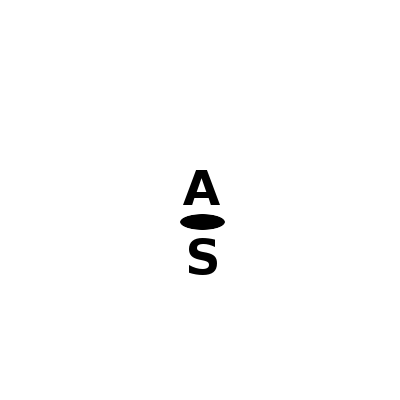So, this morning at 3am or so I had an epiphany, and it requires re-doing or maybe just re-organizing my verbs and my nouns.
See, the verbs in the new language (currently called sodemadu) all describe paths, and motion along said path. I had previously divided them into verbs of motion, which fit that description very well (except maybe evi and ɛmɛmɛ), and verbs of stance, which function more like copulas and are differentiated by the shape of the subject. But really, what is going on is that the verbs group by the dimensionality of the path.
By dimensionality I mean the grade-school idea of 1 dimension is a dot, 2 dimensions are a line, and 3 dimensions are a plane. So the verbs of stance become are describing a 1-dimensional path, so to speak. The verbs of motion are (most of them) describing a 2-dimensional path, motion along a line. (The line does not have to be straight, which kinda introduces the third dimension, but in the sense that topologically a donut is the same as a coffee mug, a path that isn’t straight can be considered straight and therefore 2-dimensional for the purposes of these verbs.) The two verbs that don’t fit are evi and ɛmɛmɛ, which really describe a 3-dimensional path. evi means to move outwards in all directions or to expand, and ɛmɛmɛ is its opposite. It might help to think of these as image schemas rather than as anything literally real. I’ve attached some gifs to illustrate (A is subject, S is point of origin or source, and D is end-point or destination).
1D:  2D:
2D:  3D:
3D: 
So, there we go, that’s what the verbs really are doing. Which means I need to re-think them.
Currently, I have 3 verbs of stance–one for points, one for items with a strong horizontal dimension, and one for items with a strong vertical dimension. I also have a negative verb that negates all three. It occurs to me that with this new scheme, all I really need is the one for points, as it is describing a path that is a point. The negative might be considered a 0-dimensional verb if you like. 🙂
Where this gets interesting is with the remaining 2D verbs. Tɨŋi would be the prototypical 2D verb. But what about the rest of them? Ono is essentially the opposite of tɨŋi in that there is still a straight path but going in the opposite direction. On the other hand, maybe anything that I would use ono for can be done with tɨŋi or ɛmɛmɛ. Pɛsi is tɨŋi with no destination because the assumed destination is simply “away”. Maybe pɛsi is a negative 2D verb? Duso involves moving back and forth, or going around and coming back to the beginning. Again, not sure what to do with this. Aŋi and kiɬi, though, both explicitly involve a 2D path through a 3D space. That is, aŋi differs from tɨŋi in that the destination is the journey rather than the end-point of the journey. With kiɬi, the destination is something that has been passed by or missed. Does that make aŋi and kiɬi 2.5-dimensional?
One interesting twist to all of this is that I mark evidentiality on the verb. For some reason, cultures that have grammatical evidentiality prefer statements that convey eyewitnessed knowledge to statements that don’t. So, rather than saying “He didn’t go to the store.” (which is an inference, really, after all how do you know where all he didn’t go?) they prefer to say “He is not at the store.” (if the speaker is in the store). So that means that the preferred negative of a 2D verb is probably a 1D (or zero-D) negative.
Anyway, as I said, I need to re-think things.
Regarding nouns, my noun classes sort of fall into the group of things that don’t move on their own (most inanimates), the things that move linearly (most animates), and the things that expand, contract, or are emitted (light, sound, possibly the ocean with its tides, ideas, ???). This roughly corresponds to existing class iii, class i & ii together, and class iv. Currently I have a way of conveying class iii as linearly motile, and class i and ii as non-motile, but what about that third dimension? Do I use a different form for a rock that is stationary, a rock that is moving as a projectile (or seemingly on its own like the ones in Death Valley), and a rock that is growing/expanding (or exploding?). Maybe this 3-way difference would be better marked on an animate noun – one that is still, one in motion, and one that is growing. On the other hand, the difference between moving in 2D and in 3D can be conveyed by the verb, so maybe it doesn’t need to be marked. Something to think about anyway.
Another thing I like to have in my languages is some way to convey volitionality. It occurs to me that the evidential system can already do this: it is common in evidential languages to use a non-eyewitness evidential for things the subject did non-volitionally. So, “I|He jumped down” would use the eyewitness evidential, but “I|He fell down” might use an inferred (it seemed to me) or reported (I’m told) evidential. (And both of those would use the same 2D verb conveying a linear path in a downward direction.)
And lets not get started on dimensionality above 3D.



